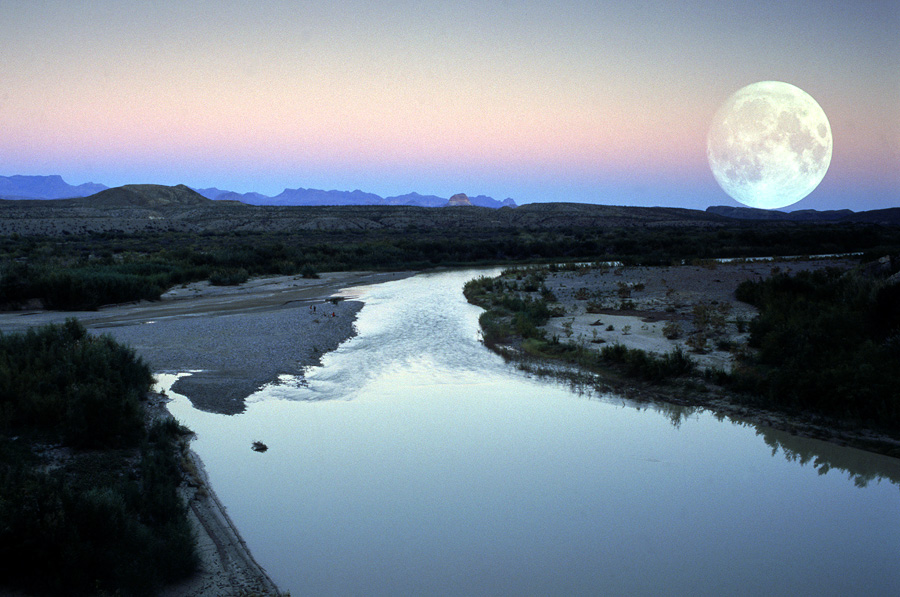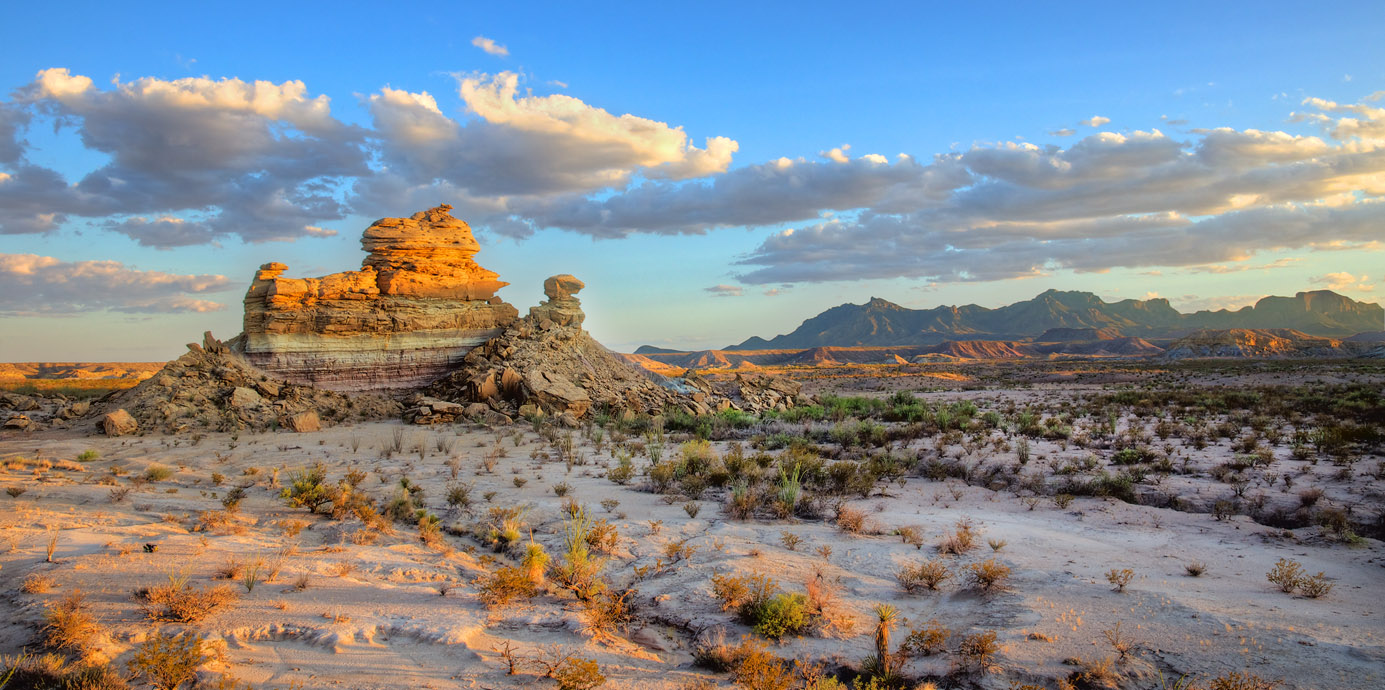Deep in the west of Texas, the remote beauty of Big Bend’s rugged mountains, canyons and expansive desert wilderness unfolds. The landscape looks like the backdrop for a John Wayne movie. Here, the Rio Grande forms the Mexican border. Although Big Bend National Park is one of the largest US national parks, it is still a well-kept secret.
Once an isolated, seemingly inhospitable area that could only be reached by miles of dirt trails, Big Bend has become one the most popular vacation destinations in the Lone Star State. However, its on average 350,000 annual visitors are predominantly from the home country. International tourists are just beginning to discover the scenic vistas, varied wildlife, historic cities, and ancient cultures of Mexico’s northern neighbor. The 800,000-acre national park features three diverse ecosystems: the river, the desert, and the mountains. Big Bend encompasses the largest protected area of the Chihuahua Desert in the United States. The Rio Grande forms its southern border, and it is the only park that contains a complete mountain range, the Chisos Mountains. The immense size of Big Bend and its low number of visitors provide something that is becoming increasingly important for many people – isolation and tranquility. And that surrounded by impressive natural features.
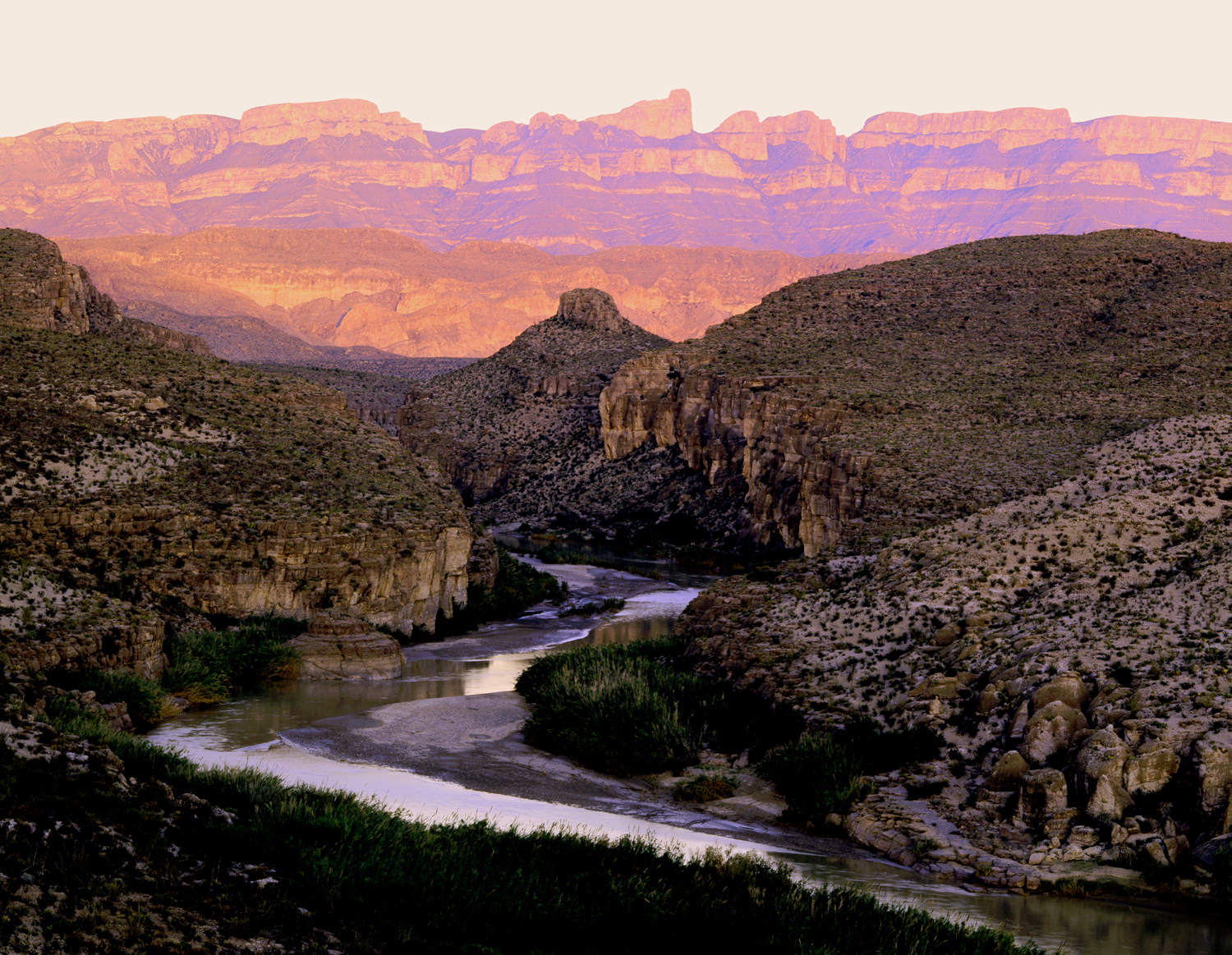
A big bend in the course of the Rio Grande in southwestern Texas gave the national park its name. While the park is mainly renowned for its dramatic beauty and endless recreational opportunities, it also has a rich cultural history. Ancient peoples lived in Big Bend or traversed its terrain for thousands of years. Their presence is documented through pictographs and archaeological sites. White inhabitants have made Big Bend their home for several hundred years, but non-Native Americans have known of the existence of the Rio Grande only for 150 years.
Spanish conquistadors crossed the Rio Grande in the 16th and 17th centuries looking for gold, silver, and fertile land. Comanches crossed the river to and from their raids in Mexico in the 19th century. Around 1900, Mexican settlers began to develop agriculture on both banks of the river. After 1920, when the unrest came to an end, the Anglo-Americans arrived. Cotton and food crops flourished around Castolon, today’s Rio Grande Village, even after the park was established.
Big Bend National Park was established in 1944, not only for the preservation and protection of a significant part of the Chihuahua Desert along the Rio Grande, but also for the use and enjoyment of present and future generations. The park encompasses almost 80% of the Chihuahua Desert and offers rich biological and geological diversity.
Big Bend Fauna and Flora
Before Big Bend came under the protection of the National Park system, almost all its trees were cut by the logging industry. Today, the park is completely rehabilitated and features a broad variety of plant and animals. The park is home to more than 1,200 species of plants (including approx. 60 species of cacti), 11 species of amphibians, 56 species of reptiles, 40 species of fish, 75 species of mammals, 450 species of birds, and more than 3,600 species of insects. Big Bend features more species of birds, bats, and cacti than any other national park in the United States.
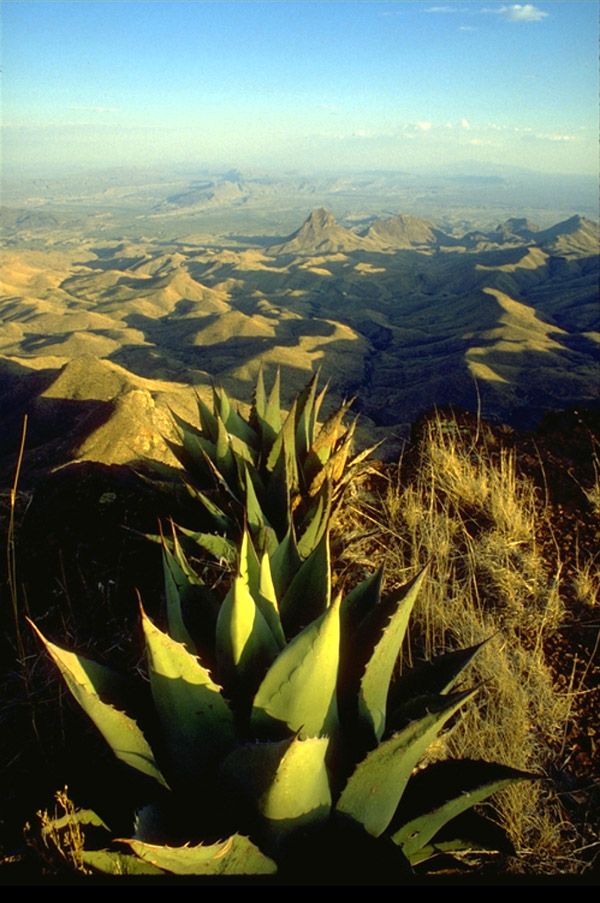
There is so much to discover and so much terrain to hike in this giant park. Where is the best place to start?
We started our trip in Midland and arrived at the northern entrance to Big Bend via the small town of Marathon, located approx. 100 miles away from the park. The first road led to the visitor center at Panther Junction, where the park’s administrative headquarters also can be found. There you can get anything that you may need for your adventure in the park – permits for backcountry hiking and camping as well as kayak or boat tours, informational brochures, maps, and you can also pay the entry fee for the park there in case you did not so when driving through the gate, etc. Interactive exhibits give you an overview of the geology, natural features, and cultural history of the park.
The visitor center also has a theater in which you can watch a movie about the park on request. Additionally, the visitor center complex also features a bookstore operated by the Big Bend Natural History Association, a post office, and bathrooms. At a water fountain specifically designed for filling water bottles, you can fill your personal water containers, and you should make sure you have plenty of it. Next to the veranda of the visitor center is the Panther Trail, a nature trail that you can discover on your own. The Panther Junction service station, approx. 1/3 mile from the visitor center, provides not only gas and diesel, but also groceries.
We headed west, toward the Chisos Basin. The curvy country road winds uphill, and passes through stunning scenery that offers everything from luscious, green meadows to cacti and mature forests. The mountains are often compared to green islands. Along the road, there are numerous signs directing you to especially scenic views or points of interest. Chisos Basin is at an elevation of approx. 5,400 feet. Here, we find our home away from home, the Chisos Mountains Lodge, nestled at the foot of the majestic Chisos Mountains.
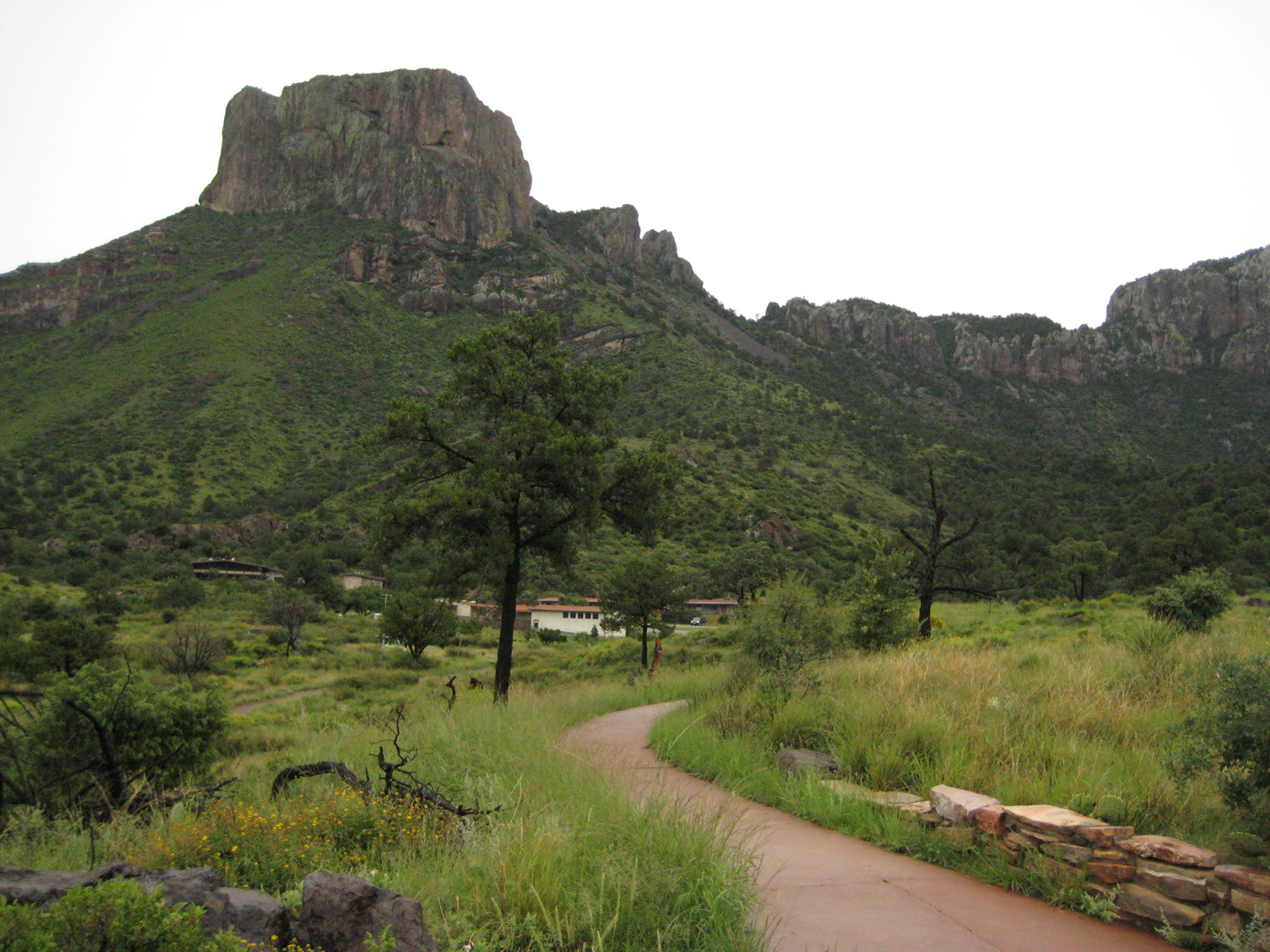
Even today, the lodge, which is spread across several buildings, is the only hotel in Big Bend National Park. The first guests arrived in 1946. The original rooms consisted of rustic huts without running water or toilets scattered around the local hills. The bathhouses were in the present-day location of the “Rio Grande” and “Casa Grande” rooms. Of course, this has changed. The 72 non-smoking accommodations that are available are separated into hotel and motel rooms as well as small Roosevelt stone cottages. All are near the environmentally friendly restaurant, the gift and camping store, as well as a small visitor center.
The rooms are cozy and equipped with the essentials – coffee maker, refrigerator, microwave, hair dryer. Several of the rooms have air conditioning, others ceiling fans. However, phone service and TV are not available. But who needs those when you can enjoy stunning views and sunsets from your own balcony (depending on room location)? Finding a cell phone signal is also a fruitless endeavor. The lodge does provide free WIFI and, with only a few exceptions, this service is available in most rooms as well as the restaurant, on its patio (that provides spectacular views), and the lounge.
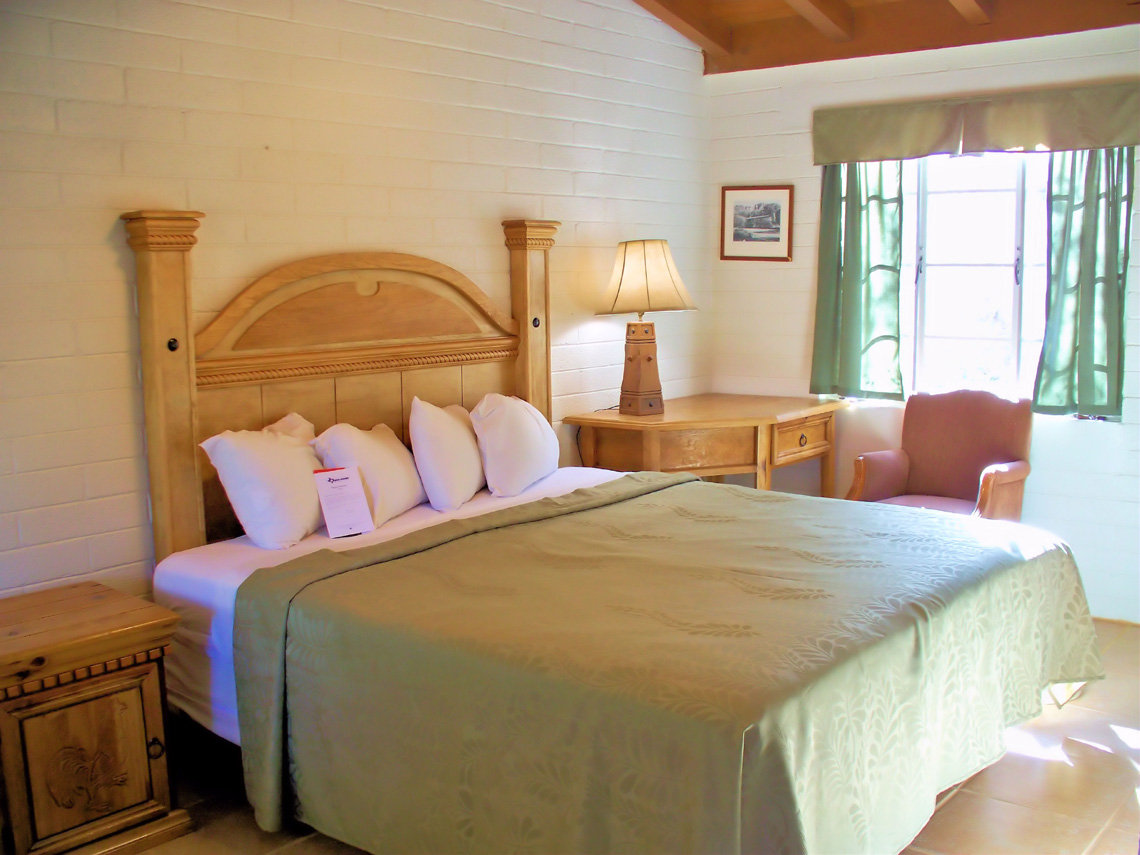
From October to June, the restaurant offers an extensive breakfast buffet every morning. If you are planning a day hike, you can pick up a “hiker’s lunch” to take with you and enjoy it at a scenic spot on your outing, such as the bank of the Rio Grande.
Travel update: Renovation of the Chisos Mountain Lodge should begin July 12, 2025!
You can find impressive photo opportunities right at the lodge: the 7,500-ft. Lost Mine Peak and the 7,700-ft. Emory Peak. Just a few steps away, you can go on an interesting stroll and come upon one of the most famous photo motifs – The Window. Especially at sunset, a horde of photographers gathers there to take the “perfect” shot.
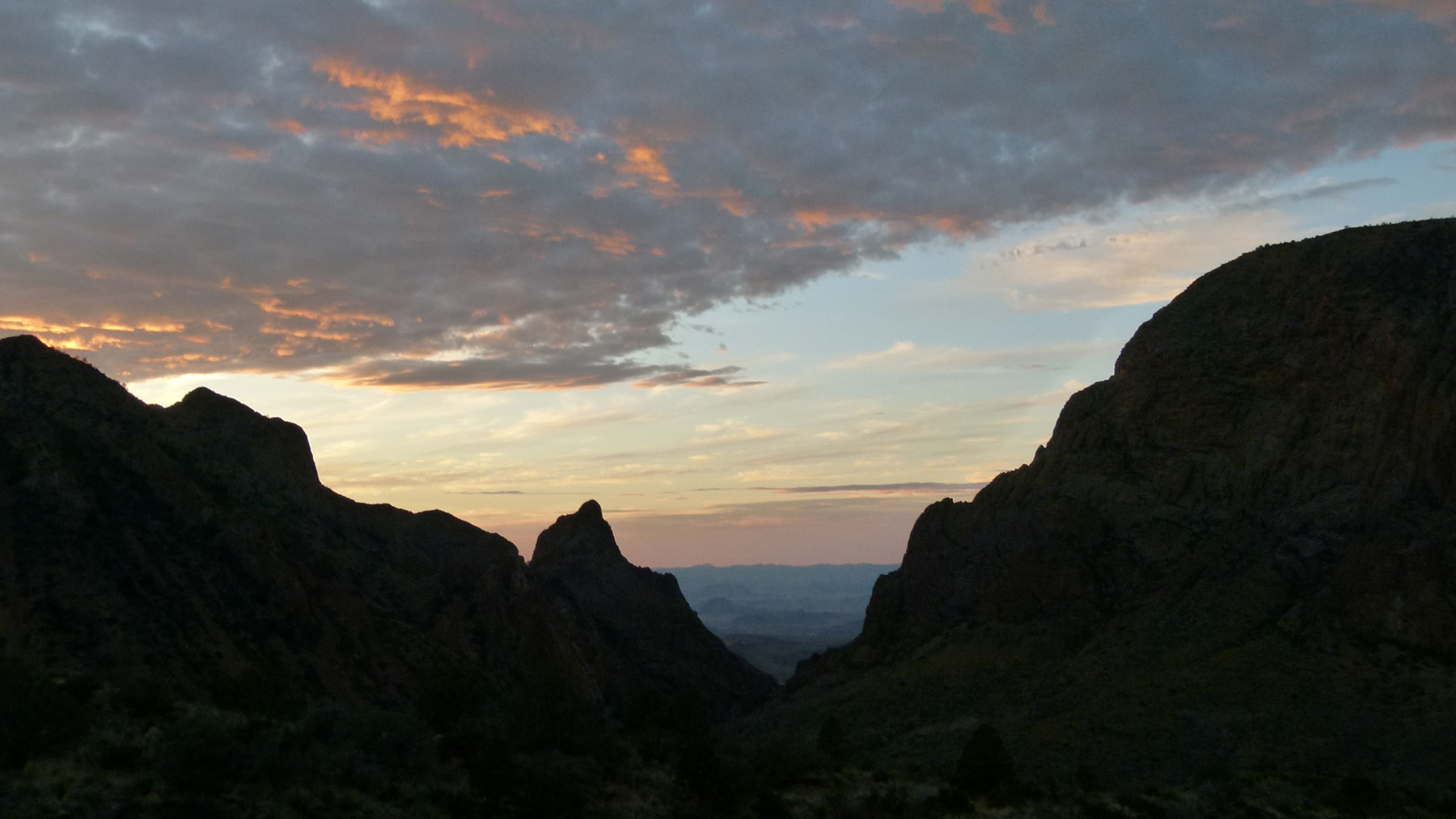
Canyons and Trails
With more than 100 miles of country roads, 150 miles of gravel roads (off road) and almost 200 miles of hiking trails, the park offers virtually unlimited opportunities for scenic drives, hiking, camping, mountain biking, horseback riding, birding, and wildlife watching. Due to the lack of light pollution, an extraordinarily starry sky is visible at night. Additionally, the Rio Grande in the park provides close to 118 miles for canoeing, kayaking, and rafting. But Big Bend is a hiker’s paradise. Park elevations range from 1,600 feet along the Rio Grande up to 7,700 feet at the summit of Emory Peak in the Chisos Mountains.
These dramatic changes in elevation offer exceptional diversity in plant and wildlife as well as scenery. In general, hikers need to remember that these changes in elevation can result in temperature differences of 10 degress Fahrenheit (6 to 7 degrees Celsius). Hikes in the desert regions of the park vary from short, simple loops to several-day wilderness adventures. There are approx. 20 miles of hiking trails in the Chisos Mountains that feature forests of pine, oak, juniper, and Arizona Cypress.
Big Bend National Park has three canyons – Santa Elena, Mariscal, and Bosquillas. Santa Elena canyon is the largest and most distant canyon. The Rio Grande has carved a deep chasm into the canyon, which also forms part of the border between the US and Mexico. The 30-mile Ross Maxwell Scenic Drive passes several points of interest and scenic overlooks on the way to the canyon. Sotol Vista, Mule Ears, and Tuff Canyon are all worth a quick stop.
You can get a glimpse into the past on the Sam Nail Ranch, the Homer Wilson (Blue Creek) Ranch, and the Castolon Historic Compound. The windmill on the Sam Nail Ranch still pumps water. At the end of this scenic drive is the beautiful Santa Elena Canyon, whose limestone walls form a 1,640-ft deep gorge along the Rio Grande. A short path from the parking area leads you there. Depending on the water level, you can hike far into the gorge. An exceptionally stunning view can be found after a short, but steep ascent that also offers outstanding photo opportunities.
Please resist your urge to wade across the river to the opposite bank! This is Mexico, meaning that you are leaving the United States and should expect to deal with the border patrol when you return. Be sure to always have your passport and immigration papers with you. Otherwise, your vacation can quickly turn into a nightmare.
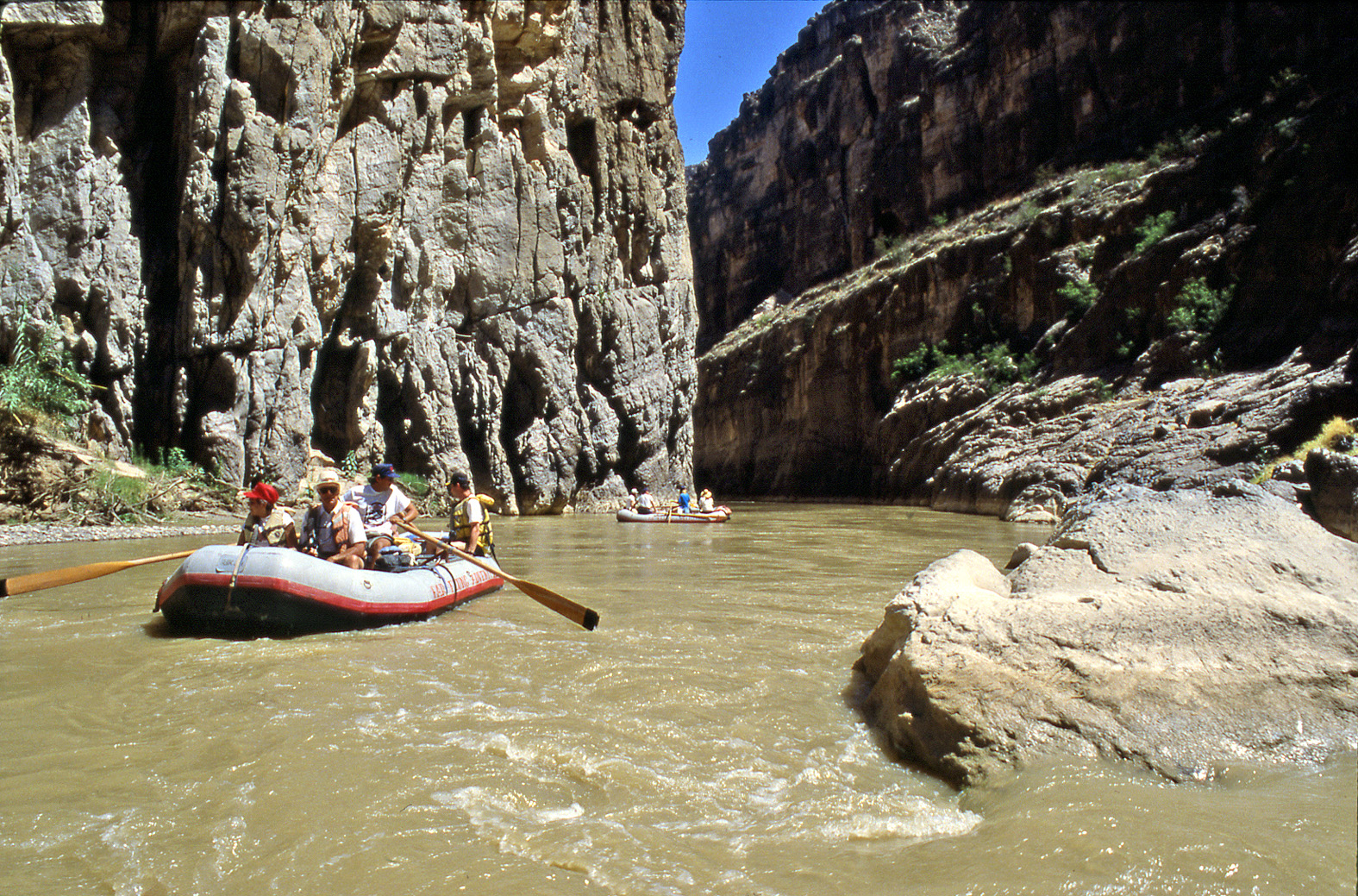
There is a good chance that you will encounter some type of wildlife on your outings. The smaller animals such as snakes (venomous and non-venomous), scorpions, spiders, and centipedes are active during the warmer months. Watch where you are stepping and be sure to wear sturdy footwear, hiking boots, or protective gaiters when hiking.
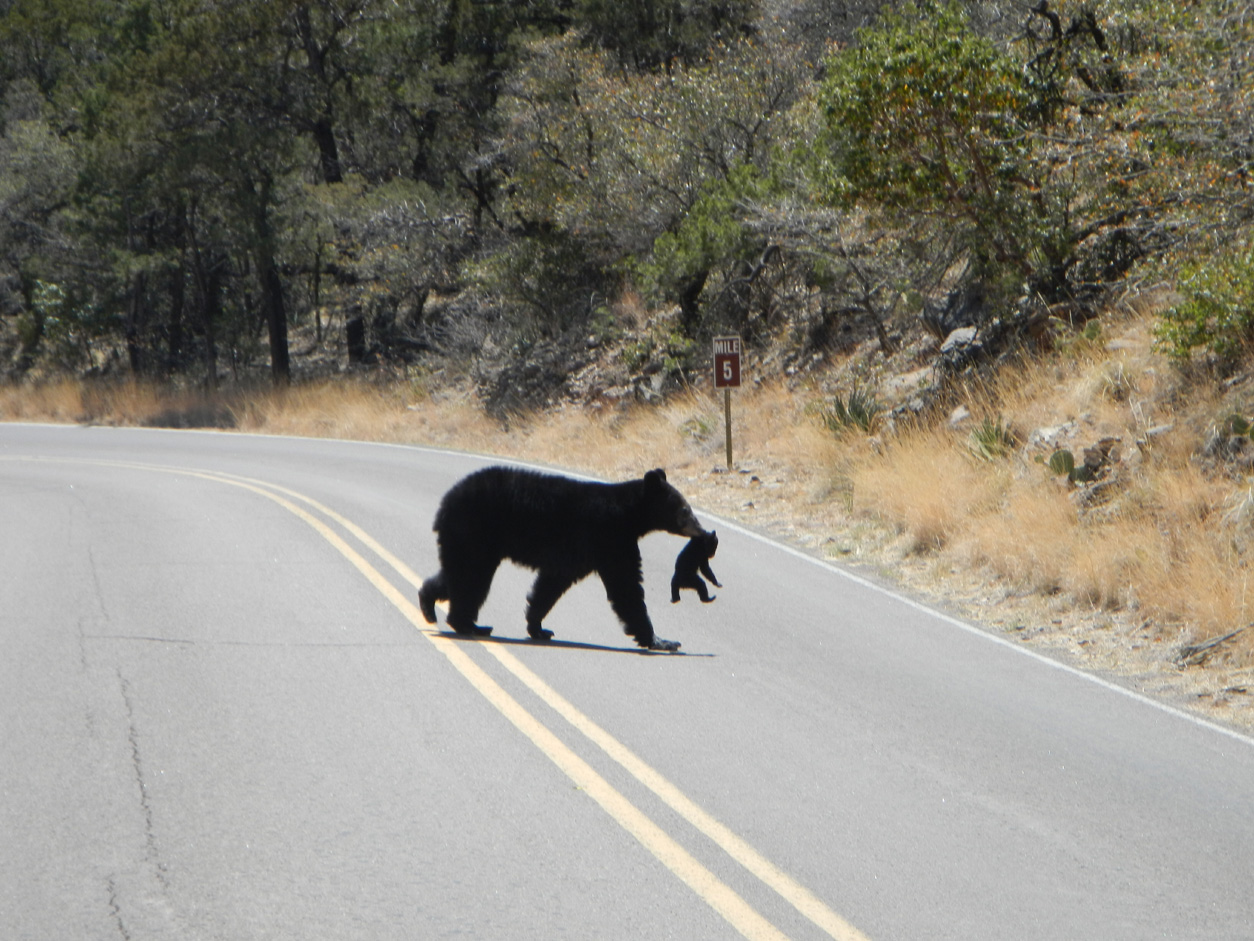
Black bears, javelinas, skunks, coyotes, and raccoons are mostly found around campgrounds. Although they may appear “cute”, they are WILD! Please observe wildlife regulations and never feed the animals. Food is best kept in the trunk of a car and garbage should be placed in designated containers. Mountain lions also call Big Bend home, particularly in the Chisos Mountains. If you see a bear or mountain lion, please report the sighting to a ranger.
Sometimes the bears are so brazen that they stretch out on your lounge chair!
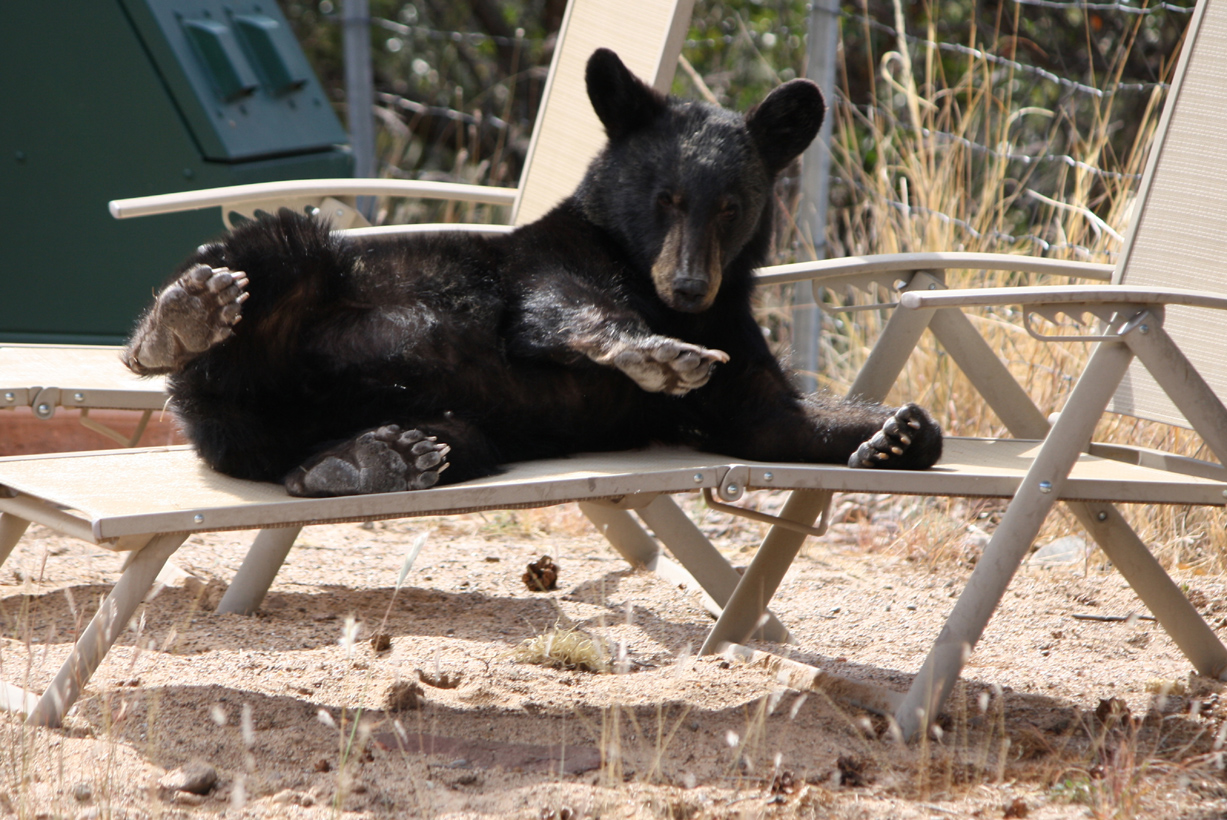
The saying “everything is bigger in Texas” also holds true for Big Bend National Park. Even if you spend a week there, you won’t have seen everything. Before you dare to go back to civilization, however, you should make two more detours. One of these is Hot Springs — a spring of 104°F (40°C) located near the Rio Grande Village. The dissolved mineral salts are reputed to have healing powers. A 2-mile, bumpy and narrow gravel road leads to the Hot Springs Historic District. Please be advised: RVs, trailers, and oversized vehicles are prohibited on the one-lane segment of the road. Once you reach the bottom, you can cover the last half mile to the hot springs on foot.
Just a couple of miles from here is also the border crossing to Mexico. At the “Boquillas Crossing Port of Entry” you will find neither customs nor immigration officials. Everything is done electronically. Visitors present their travel documents and communicate via decentralized intercommunication. Pedestrians reach the respective opposite border by rowboat. The crossing is open Wednesday – Sunday from 8:00 am to 5:00 pm (November to April) and Friday – Monday from 9:00 am to 6:00 pm (May to October).
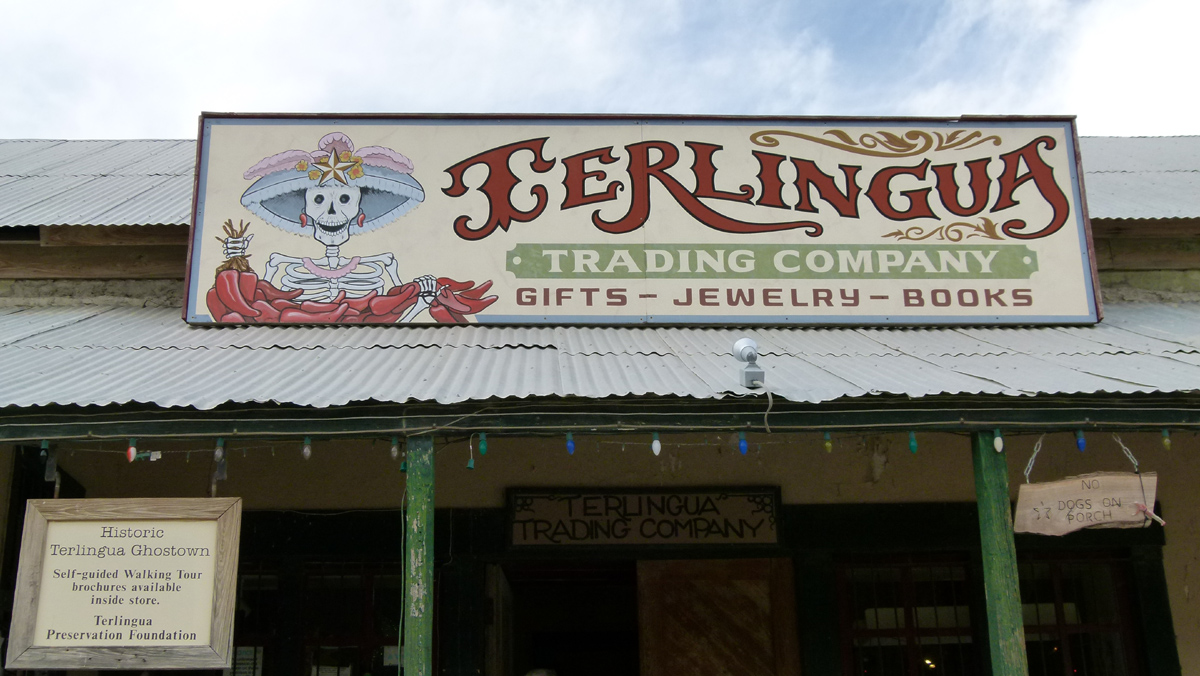
Another detour worth doing is Terlingua – a mix of ghost town and hippie destination. Terlingua is located outside of Big Bend National Park. It was once a flourishing mining town that covered 40% of the nation’s demand for quicksilver in the 1920’s. In 1940, it became a ghost town. Now inhabited again, you find mostly artists and adventurous nonconformists there. Unusual establishments and art galleries invite you to stay and shop. Once a year, Terlingua turns into an international meeting spot – in November, it hosts the International Chili Cookoff which attracts thousands of visitors.
El Paso or Midland are your best starting points for a trip to Big Bend National Park. We chose Midland, the “gateway to the West”, because the airport there is the closest one to the park. Midland is a small town, 165 miles northwest of Marathon, which has a couple of interesting sights in store for you. It is worth spending 1 – 2 days there while you get ready for your big adventure in the park. Two extraordinary museums are worth visiting.
The Museum of the Southwest houses several different exhibits and collections of artwork from the southwestern United States. The children’s museum offers exhibits, computer programs, as well as other interactive programs for kids. The Blakemore Planetarium with its state-of-the art dome shows is truly something special. Be sure to catch one of the 3-D movies playing there. The museum features one of the few Spitz HD Star projectors.
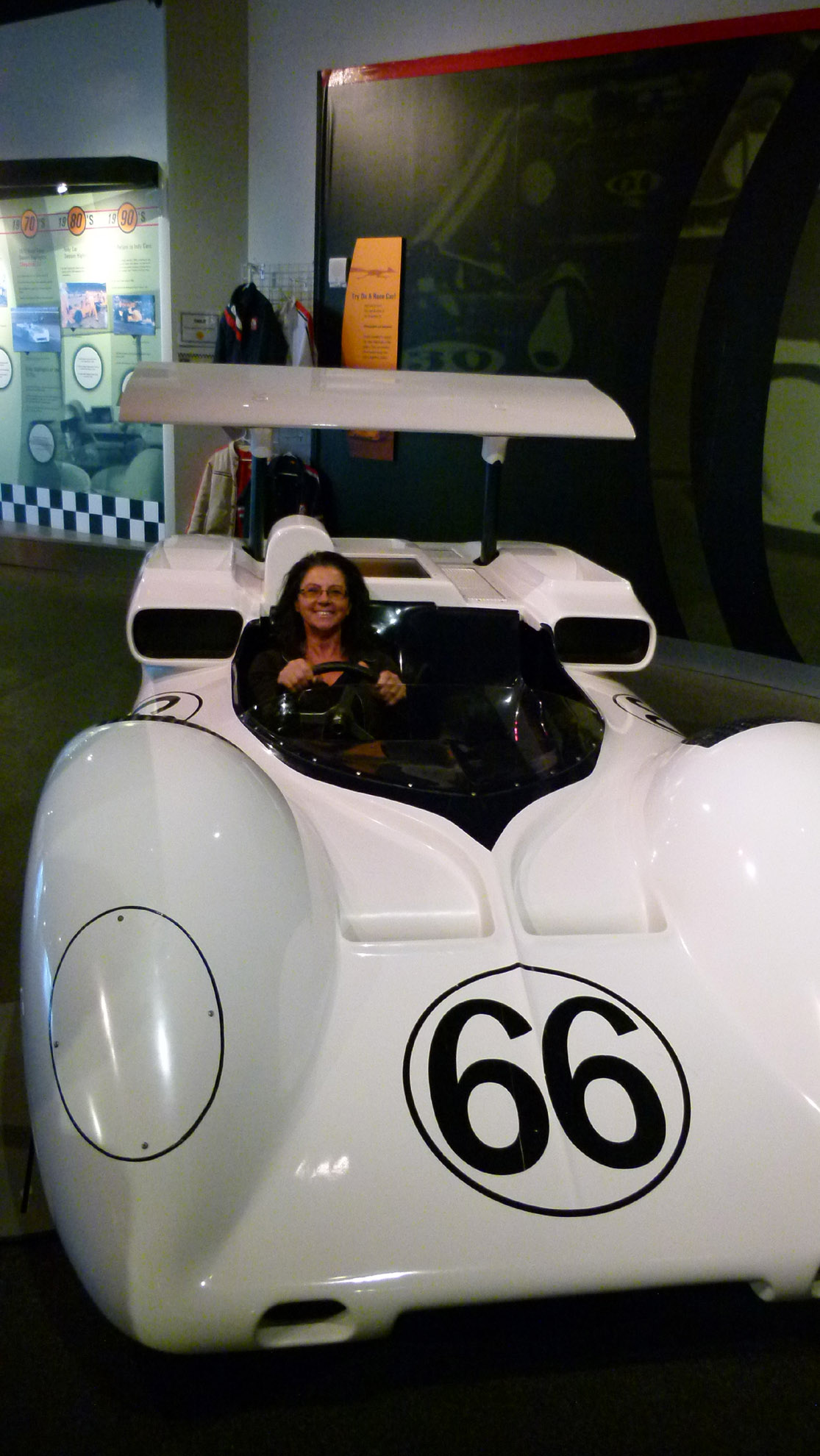 At the Permian Basin Petroleum Museum, it is all about oil. The interactive museum, which features the world’s largest collection of antique oil drilling equipment, leads you step by step through the dynamic search for black gold, beginning with prehistoric times to the present. The exhibits include 1,000-year-old maps and textiles of prehistoric peoples, cowboy saddles and fencing material, antique drilling equipment, railroad artifacts, and an “underwater walk” through an ancient sea. Everything is underscored by beautiful murals of the American West by Tom Lovell. The Chaparral Gallery houses all seven of Jim Hall’s Chaparral race cars.
At the Permian Basin Petroleum Museum, it is all about oil. The interactive museum, which features the world’s largest collection of antique oil drilling equipment, leads you step by step through the dynamic search for black gold, beginning with prehistoric times to the present. The exhibits include 1,000-year-old maps and textiles of prehistoric peoples, cowboy saddles and fencing material, antique drilling equipment, railroad artifacts, and an “underwater walk” through an ancient sea. Everything is underscored by beautiful murals of the American West by Tom Lovell. The Chaparral Gallery houses all seven of Jim Hall’s Chaparral race cars.
Big Bend Nationalpark
www.visitbigbend.com * www.nps.gov/bibe
Entry: $30 per vehicle/$25 per motorcycle, valid for 7 consecutive days. An annual pass for $80 allows entry into all national parks in the United States. You can buy it in advance online at http://store.usgs.gov/pass/index.html or at the entry gate or visitor center at any national park.
Please note: Cash is not accepted, only credit and debit cards
Chisos Mountains Lodge
Big Bend NP, Basin Rural Station, Big Bend National Park, TX 79834
432-477-2292 * www.chisosmountainslodge.com
Midland, Texas
109 North Main, Midland, TX 79701 * Tel: 432-683-3381 * www.visitmidlandtexas.com
Photos: Eric Walker; Visit Big Bend; Chisos Mountains Lodge; Sonja Stimmer
